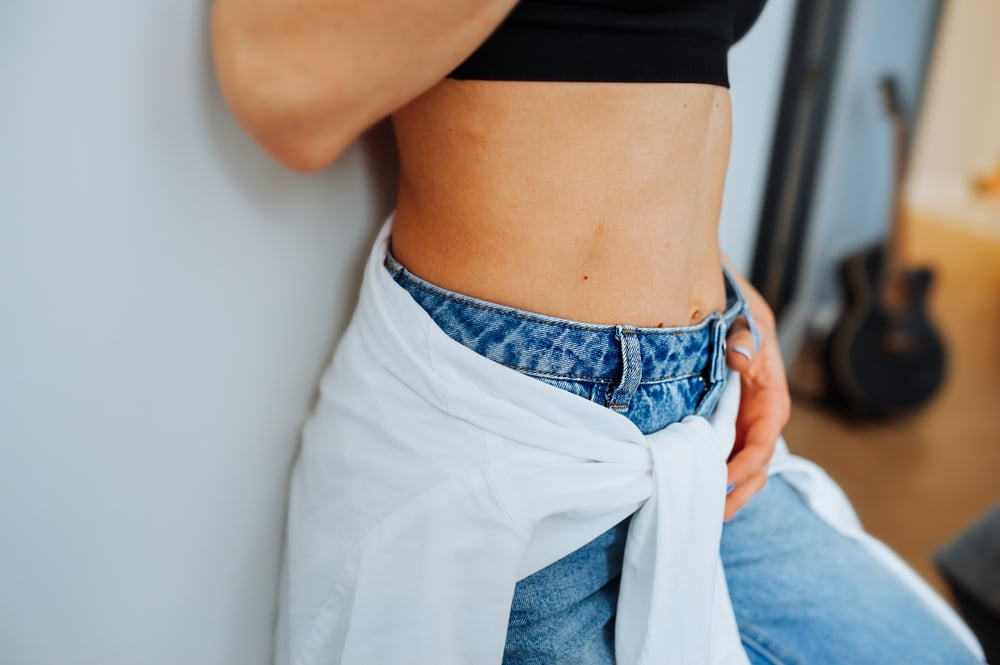Gynecomastia, or “man boobs,” can be devastating to a man’s self-confidence. Gynecomastia surgery is a way to permanently reduce the appearance of male breasts for a flatter, more masculine chest. Continue reading to learn more about gynecomastia and how to get rid of gyno.
What is Gynecomastia Surgery?
For those wondering how to get rid of gynecomastia, you can turn to gynecomastia surgery. Sometimes called male breast reduction, gynecomastia surgery is a procedure that reduces the appearance of enlarged breast tissue or fat on the chest. Gynecomastia has many different causes, including:
- Hormonal changes
- Genetics
- Overweight
- Medication or drug use
Sometimes, gynecomastia has no clear cause. Most men experience gynecomastia at some point (typically during puberty) which then goes away. For some men, gynecomastia does not go away, and surgery is the best solution.
Is Gynecomastia Surgery Right for Me?
Gynecomastia surgery is best for men who are bothered by the appearance of enlarged breasts and who feel embarrassed in situations where it’s common to remove their shirt. If there’s no underlying cause of gynecomastia or it doesn’t subside on its own, then you may be a good candidate for surgery. You should also be in good overall health, at a healthy and stable weight, non-smoking, and have no medical conditions that might impair your recovery.
Your Gynecomastia Procedure
Gynecomastia surgery can be performed using general anesthesia or local anesthesia with sedation (Dr. Trupiano will decide the right option for you during your consultation). To begin, Dr. Trupiano will create incisions and then perform one of the following techniques on the underlying tissue:
- Surgical excision (best for enlarged breast tissue)
- Liposuction (best for stubborn fat)
In some cases, a combination approach might be used. Dr. Trupiano will also reposition and reduce the areolae and nipples if needed. Once complete, your incisions are closed, and you can return home.
Gynecomastia Surgery Results and Recovery
Gynecomastia surgery typically requires 3-6 weeks of recovery, based on your surgical procedure. During this time, you’ll be given a surgical compression vest to wear as much as possible. This is to help reduce swelling and fluid build-up, and to help the skin adhere to the new contours. You should avoid strenuous activity and exercise until otherwise indicated by Dr. Trupiano. It’s normal to experience swelling and bruising at the surgical site, but this begins to subside within 2-3 weeks. It can take a few months for your final results to settle in, but you can enjoy long-term results with gynecomastia surgery as long as you maintain a healthy and active lifestyle.
Schedule a Consultation
Gynecomastia surgery can be a life-changing procedure for many men. To learn more about your options, schedule a consultation with one of America’s Top Breast Surgeons, Dr. Trupiano. You can reach our Troy, MI office by calling or filling out our online form.
Gynecomastia FAQs
Can gynecomastia grow back after surgery?
Yes, gynecomastia can grow back after surgery but it is very uncommon. It can grow back with an unhealthy lifestyle and diet. Weight gain and undiagnosed medical issues can contribute to the return.
Can thyroid problems cause gynecomastia?
Thyroid problems can lead to gynecomastia. Specifically, hyperthyroidism can increase estrogen levels and lead to overdeveloped male tissue in men.
Can you get rid of gynecomastia without surgery?
The only way to treat true gynecomastia is to undergo male breast reduction surgery.
Does gynecomastia go away with weight loss?
Gynecomastia may not go away after weight loss. While the excess fat cells may disappear, the excess glandular tissue will still be there.
Does gynecomastia surgery leave scars?
Scarring is possible, but with a qualified surgeon, it should be very minimal and they can place them in a inconspicuous place.
How can gynecomastia be prevented?
The risk of gynecomastia can be reduced by staying away from drugs like anabolic steroids, heroin, and marijuana, eating a healthy diet, and avoiding alcohol or drinking in moderation.
How can you tell the difference between gynecomastia and Pseudogynecomastia?
While gynecomastia involves an excessive amount of glandular tissues, pseudogynecomastia is due to an excessive amount of fatty tissue.
How do I know if I have gynecomastia?
If you have pain or tenderness in the chest area that increases over time, swelling, or lumps that are hard or rubbery, you may have gynecomastia.
How do you shower after gynecomastia surgery?
You will want to avoid showering until 48 hours after your gynecomastia surgery. When you shower, make sure the water isn't too hot, don't scrub too hard, and try to stay in the shower for as little time as possible. After your shower, past your incisions dry.
How long do you have to wear a compression garment after gynecomastia?
A compression garment is typically worn for the first few weeks after surgery.
How long does it take to recover from male breast reduction?
The first stage of recovery takes about 1-2 weeks, but you can expect the full recovery process to take anywhere from 4-6 weeks.
What causes gynecomastia in males?
Hormonal imbalance, genetics, certain medications, an unhealthy lifestyle, or another undiagnosed medical condition are typically the causes of gynecomastia.
What is the best treatment for gynecomastia?
The best treatment for gynecomastia is surgery which reduces the breast size and flatten the mans chest either through liposuction or excision.
When should I start massaging after gynecomastia surgery?
Three weeks after surgery, start massaging the chest area several times a day for 20 minutes. You'll want to continue this for 8 weeks or more. It will soften the scar tissue and ensures the skin will lay evenly.
Is gynecomastia surgery painful?
General anesthesia or intravenous sedation are used during gynecomastia surgery to prevent feeling any pain.
How is gynecomastia diagnosed?
Your doctor will diagnose gynecomastia by listening to your symptoms and by doing a medical exam. They may also order blood tests, a CT scan, an MRI, and a mammogram.
What age can males beging to develop gynecomastia?
Gynecomastia typically happens during the preteen or teen years when boys are going through hormonal changes during puberty. But it can also happen to newborn babies and adult men as they grow older.
Can exercise help gynecomastia?
Unfortunately, no. Gynecomastia is not caused by excess fat. It's caused by excess glandular tissue so while exercise is good for your overall health, it will not help your gynecomastia go away.

TESTIMONIAL
I can’t thank Dr. Trupiano enough! I was struggling with gynecomastia for most of my life. I was super nervous about the procedure but after talking with Dr. Trupiano he assured me of what to expect and how the whole process would go. I could not be happier with how it came out.
I recommend anyone that’s on the fence or unsure about getting Gynecomastia surgery, to choose Dr. Trupiano as it was a simple, easy and delightful experience!
READ MORE










